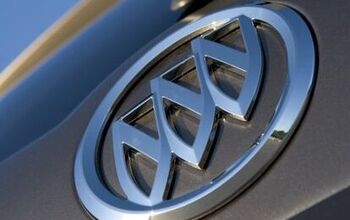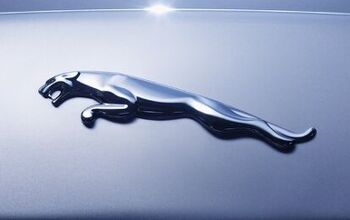F1: We Don't Need No Stinkin' Displacement
Last year, F1 commentators were busy lamenting new rule changes that outlawed the 3.0-liter V10 powerplant. After Renault introduced the motor to the sport in 1989 (with Williams), the configuration quickly became the sport’s defacto standard. Then, in the name of safety, the FIA mandated a reduction in engine capacity from 3.0 to 2.4 liters, and reconfiguration to a V8. Pundits saw the move as one more step toward the spec series they all so desperately want to avoid. Ladies and gentlemen, the jury is in.
The new rules, designed to decrease racing speeds, also eliminated attendant cutting-edge technology, such as variable-length intake trumpets (key to the tuning and tractability of the high-power V10 engines). All in all, the FIA’s new engine rules reduced engine power by around 20%, corresponding to the 20% drop in displacement and cylinder count. In real world terms, the move reduced engine power by around 185 horsepower.
During the off-season, the FIA was lambasted for the switch. Some journalists and drivers (no need to name names, Jenson Button) claimed a schoolgirl could drive the new formula cars, that the element of overwhelming power had been removed from the equation. Perhaps they had a point. The drop from 950 to around 775hp was drastic.
But the pundits failed to foresee the resulting acceleration of aerodynamic and tire technology. As this season’s results prove, the two technologies helped compensate for the rule change. Within months, the smaller-engined cars’ 2006 lap times leaped straight back to their 3.0-liter levels. Here’s the deal…
When tweaking a race car’s aerodynamics, designers must make a basic tradeoff: downforce vs. drag. While adding wings to a car can increase downforce, the gain comes at the expense of drag. Drag increases a vehicle’s high-speed grip, but reduces its top speed. Wing angle, wing size and configuration all play vital roles balancing the two forces.
This is clearly evident when comparing the rear wing angles used by the F1 teams at Monza and Monaco. Looking down the length of the car (from nose to tail) you can easily see the changing cord, or vertical dimension, of the rear main-plane: steep at Monaco, shallow at Monza.
A current F1 car’s front and rear wings only generate 30 to 40% of the total downforce. Underbody airflow management and the diffuser account for the rest; it’s absolutely crucial to the car’s handling at any given speed, as well as the car’s maximum velocity. Correctly manipulating the airflow around the rear of the car is especially important to the performance of the underbody aerodynamics.
The reduced dimension of the new 2.4-liter V8 liberated significant room for development in this mission critical area, placing even more emphasis on the packaging of bodywork and components in the car’s rear. Designers greatly enhanced the efficiency of the undertray and diffuser– to the point where they are largely responsible for the similar speed and grip levels achieved pre and post engine rule change.
The reintroduction of tire changes during pit stops was the other major change for the ’06 season– which also ended-up subverting FIA's intention to lower racing speeds. The maximum stint length during a typical race strategy is now around 25 laps, depending on track conditions. Because one set of tires no longer has to survive an entire race, F1 tires have changed dramatically, both in compound and construction. Equally important, last year’s championship saw Bridgestone struggle unsuccessfully to meet the grip and wear benchmarks set by Michelin. This year, the gap has closed between the two manufacturers’ tire performance.
As two and three stop strategies are the norm for the front running teams, they can run aggressively soft tire compounds which greatly enhance their car’s dynamics. The intense battle between the two tire manufacturers has also led to extreme speciation in tire compounds and constructions. Each tire choice now has a very narrow operating window, particularly with regard to temperature. These ultra-specialized compounds, while extremely quick inside their respective windows, have shown themselves to be notoriously unreliable (performance-wise) outside them. Thus tire choice is the perhaps the single most important decision made on race weekend.
In short, F1's new rule changes haven’t forced innovation and technology to take a backseat. In fact, FIA’s restrictive engine regulations have given the constructors impetus to advance the sport’s technology in several important areas. In respect to the 20% loss of power, the fact that teams have been able to equal (and in some cases better) last year’s lap times is nothing short of astounding, a testimony to the competitors’ tenacity and ingenuity.
More by Mitchell Yelverton
Latest Car Reviews
Read moreLatest Product Reviews
Read moreRecent Comments
- 28-Cars-Later I'm getting a Knight Rider vibe... or is it more Knightboat?
- 28-Cars-Later "the person would likely be involved in taking the Corvette to the next level with full electrification."Chevrolet sold 37,224 C8s in 2023 starting at $65,895 in North America (no word on other regions) while Porsche sold 40,629 Taycans worldwide starting at $99,400. I imagine per unit Porsche/VAG profit at $100K+ but was far as R&D payback and other sunk costs I cannot say. I remember reading the new C8 platform was designed for hybrids (or something to that effect) so I expect Chevrolet to experiment with different model types but I don't expect Corvette to become the Taycan. If that is the expectation, I think it will ride off into the sunset because GM is that incompetent/impotent. Additional: In ten years outside of wrecks I expect a majority of C8s to still be running and economically roadworthy, I do not expect that of Taycans.
- Tassos Jong-iL Not all martyrs see divinity, but at least you tried.
- ChristianWimmer My girlfriend has a BMW i3S. She has no garage. Her car parks on the street in front of her apartment throughout the year. The closest charging station in her neighborhood is about 1 kilometer away. She has no EV-charging at work.When her charge is low and she’s on the way home, she will visit that closest 1 km away charger (which can charge two cars) , park her car there (if it’s not occupied) and then she has two hours time to charge her car before she is by law required to move. After hooking up her car to the charger, she has to walk that 1 km home and go back in 2 hours. It’s not practical for sure and she does find it annoying.Her daily trip to work is about 8 km. The 225 km range of her BMW i3S will last her for a week or two and that’s fine for her. I would never be able to handle this “stress”. I prefer pulling up to a gas station, spend barely 2 minutes filling up my small 53 liter fuel tank, pay for the gas and then manage almost 720 km range in my 25-35% thermal efficient internal combustion engine vehicle.
- Tassos Jong-iL Here in North Korea we are lucky to have any tires.





















![QOTD: We Don't Need No Stinkin' [BLANK]](https://cdn-fastly.thetruthaboutcars.com/media/2022/07/10/8986026/qotd-we-don-t-need-no-stinkin-blank.jpg?size=350x220)












Comments
Join the conversation
For all of those who doubted that a hybrid F1 formula was in the works, see the link below, the first sign of what is on the way. Speed TV: F1 Engine Homologation and Hybrid Technology
This illustrates my personal problem with F1 and why I've never been able to "get into it." Is F1 a drivers competiton or a constructors competition? If it's about the constructors, then let them innovate -- sure, put restrictions to encourage new ways of thinking, but imposong those restrictions to "reduce top speeds" is just assinine for that purpose. True, Rallying imposed restrictions in the 80's to curb top speeds and stop spectator fatalities, but when was the last time you saw a (sober) F1 on the tarmac? And as mean and hearless as it sounds, if you're an F1 driver you accept the fact that yes, you are traveling faster than is safe and if you crash and die then honestly you can never say you didn't see it coming. And if it's a drivers race then, well, that's NASCAR. Standardize the cars and let them bash each others brains out with equal-length sticks. Obviously I'm generalizing and painting with a broad brush here.